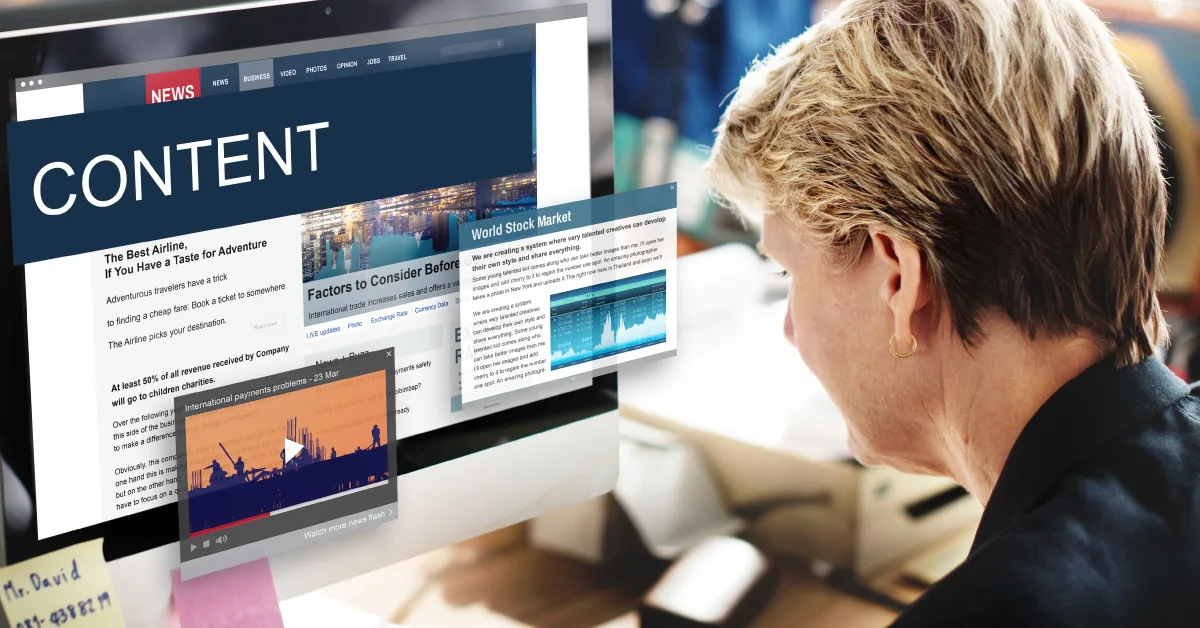Enhancing SEO with Effective Content Distribution Strategies
 September 24, 2024
September 24, 2024Creating content is just the beginning of an effective SEO strategy; the real challenge lies in making sure it reaches your audience.
Content distribution plays a pivotal role in ensuring your hard work doesn’t go unnoticed. Without proper content sharing across multiple channels, even the best content can fall flat, limiting your organic traffic and overall SEO visibility.
This blog will shed light on the SEO importance of content distribution and offer practical distribution tips to amplify your content’s reach and maximize your SEO success.
1. What is Content Distribution?
Content distribution refers to the process of sharing your content across various channels to ensure it reaches your target audience. This practice is a critical component of SEO strategies, as it helps increase your content’s visibility and impact. Here’s a breakdown of the types of content distribution and how they contribute to your overall content distribution SEO efforts:
a) Types of Content Distribution Channels
- Owned Channels: These are the platforms you control, such as your website, blog, email lists, and social media profiles. Distributing content through these channels allows you to maintain control over your messaging and branding.
- Earned Channels: This includes content sharing through backlinks, mentions, or shares by others. When other websites or influencers share your content organically, it not only extends your content reach but also boosts your SEO visibility.
- Paid Channels: Involves promoting your content through paid methods like social media ads, sponsored content, or PPC campaigns. While this requires investment, it can significantly enhance your content promotion efforts, driving targeted traffic and engagement.
b) Why Content Distribution Matters
- Effective content distribution ensures that your content reaches a broader audience, driving more organic traffic to your site.
- By strategically sharing your content across multiple channels, you can achieve better content amplification.
- This not only improves your SEO importance but also enhances your brand’s authority and credibility online.
2. How Content Distribution Enhances SEO

Effective content distribution SEO directly impacts how well your content performs in search engine rankings. By distributing your content strategically, you can achieve better visibility and engagement, both of which are critical for improving your SEO importance. Here’s how:
a) Increased Visibility
- Sharing content across multiple platforms increases its exposure, which is essential for boosting SEO visibility.
- When content is shared widely, it reaches more users who may interact with it, leading to increased site traffic.
- This higher traffic signals to search engines that your content is valuable, which can result in better rankings.
b) Backlink Opportunities
- One of the key benefits of content sharing is the potential to earn backlinks. Backlinks from reputable websites serve as endorsements in the eyes of search engines, enhancing your site’s authority.
- Regular and strategic content promotion increases the chances of other sites linking back to your content, further improving your domain authority and SEO performance.
c) Engagement Signals
- Search engines consider user engagement metrics—such as shares, likes, comments, and click-through rates—when determining the relevance and quality of content.
- By focusing on content amplification through well-planned distribution, you can improve these engagement signals.
- Higher engagement often correlates with better rankings because it shows that your content resonates with your audience.
d) Long-Term Impact
- Consistent content distribution doesn’t just benefit your content in the short term; it also has a compounding effect on your SEO over time.
- As your content continues to be shared and linked to, its content reach grows, leading to sustained improvements in organic traffic and SEO performance.
- Over time, this consistent visibility builds your site’s reputation, making it a trusted source in the eyes of search engines.
3. Effective Content Distribution Strategies for SEO
To make the most of content distribution SEO, it’s essential to adopt strategies that maximize your content’s reach and impact. Here are some actionable distribution tips to help you enhance your SEO importance through effective content sharing.
a) Utilizing Social Media
Social media platforms are powerful tools for content promotion. Each platform has its unique audience and content format, so it’s important to tailor your strategy accordingly:
- Facebook and LinkedIn are ideal for sharing in-depth articles and industry insights, where you can engage with a professional audience.
- Twitter works well for shorter, impactful messages and can drive quick bursts of traffic to your content.
- Instagram and Pinterest are perfect for visually rich content, which can increase content reach among a visually-driven audience.
Regular posting, utilizing relevant hashtags, and engaging with your audience through comments and shares can significantly boost your SEO visibility.
b) Email Marketing
- Email remains one of the most effective channels for driving traffic and engaging with your audience.
- By segmenting your email list and sending personalized content that meets the specific needs of different segments, you can drive more targeted organic traffic to your site.
- Including social sharing buttons in your emails also encourages recipients to share your content, further amplifying its reach.
c) Collaborations and Guest Posting
- Collaborating with other content creators or industry influencers can expand your reach to new audiences.
- Guest posting on high-authority blogs not only exposes your content to a broader audience but also helps build backlinks to your site, which is a cornerstone of effective SEO strategies.
- These partnerships allow for content amplification by tapping into established networks that align with your brand.
d) Repurposing Content
Repurposing is a strategy that involves taking a piece of content and adapting it for different formats or platforms. For example:
- Turn a blog post into a video tutorial or podcast episode.
- Convert key points from an article into an infographic for social media.
- Compile related blog posts into an eBook or guide.
| Tool | Key Features | Best For |
| Hootsuite | Social media management, scheduling, analytics, and content curation. | Managing and distributing content across social media platforms. |
| Buffer | Social media scheduling, engagement tracking, and analytics. | Streamlining social media posting and measuring performance. |
| BuzzSumo | Content research, influencer identification, and trend analysis. | Finding trending content ideas and identifying influencers. |
| SEMrush | SEO tools including keyword research, site audits, content optimization, and backlink analysis. | Comprehensive SEO strategy, including content distribution analysis. |
| Mailchimp | Email marketing automation, analytics, and segmentation. | Distributing content through email campaigns and tracking engagement. |
Conclusion

Effective content distribution is more than just an add-on to your SEO strategy; it is a necessity for maximizing the impact of your content. By strategically sharing and promoting your content across various channels, you enhance its SEO visibility, reach a broader audience, and drive consistent organic traffic to your site. Implementing the distribution tips outlined in this blog will not only improve your current content strategy but also contribute to long-term success in your SEO efforts.
To fully realize the benefits of content distribution SEO, consider partnering with professionals who specialize in both content creation and distribution.
Content Whale offers comprehensive services that can help you optimize your content and ensure it reaches its full potential. Whether you need help with content marketing, SEO strategies, or multi-channel content promotion, we are here to support your goals and help you achieve lasting results.
FAQs
1. What is content distribution in the context of SEO?
Content distribution refers to the strategic process of sharing and promoting your content across various platforms to increase its visibility and reach. This is a critical part of content distribution SEO as it ensures that your content reaches a broader audience, driving more traffic to your site and improving your search engine rankings.
2. How does content distribution impact my website’s search engine rankings?
Effective content sharing can significantly impact your SEO. When your content is widely distributed and shared, it not only increases content reach but also boosts engagement metrics such as likes, shares, and comments. These metrics signal to search engines that your content is valuable, which can improve your SEO visibility and ranking.
3. What are the best channels for content distribution to boost SEO?
The most effective channels for content promotion include social media platforms, email marketing, and guest posting on high-authority blogs. Each of these channels helps to increase your organic traffic and earn backlinks, which are crucial components of strong SEO strategies.
4. How often should I distribute my content for optimal SEO results?
Consistency is key in content distribution SEO. Regularly sharing your content across different channels keeps it in front of your audience, increases the likelihood of it being shared, and helps maintain steady organic traffic. Aim for a schedule that aligns with your audience’s consumption habits to maximize engagement.
5. Can content distribution help with backlink building for SEO?
Yes, strategic content sharing can lead to backlinks, which are a significant factor in SEO. When your content is shared widely, it increases the chances of other sites linking back to it, thus improving your domain authority and boosting your search engine rankings.

